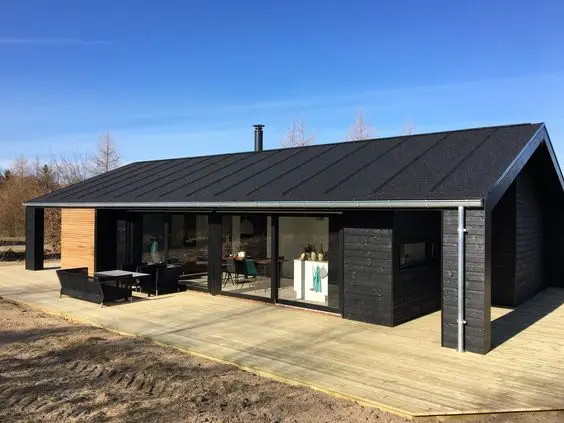Have you ever wondered why skyscrapers are composed of metal, not wood? Metal has significantly changed the landscape of architecture in recent years. More significant wooden buildings cannot be constructed effectively due to design constraints such as the need for additional support structures and the weight of the building materials. On the contrary, metal buildings offer a broad spectrum of designing buildings with higher dimensions. Pole barns get more complicated, expensive, and unreliable when you try to build a structure higher than a specific elevation.
Difference Between Pole Barns and Steel Buildings
The steel building enjoys a competitive edge over pole barns due to their resilience, strength, and versatility. While there are many obvious ways that pole barns differ from metal buildings, some subtle differences can significantly impact how they work. Let’s examine some of the main characteristics that set these two building options apart:
-
Susceptibility towards weather
-
Rough and Tough
-
Larger spaces and lengths
-
Maintenance and Upkeep
-
Durability
-
Acoustics and Sound Shield
-
Pest and Insect Damage
-
Scope for Changes and Customization
Wood’s susceptibility to weather-related issues like rotting, mold, and natural decay is a significant drawback regarding pole barns. In contrast, high-quality metal structures are immune to these problems, making them a more reliable choice.
Lightning, moisture, fire, and birds perching on the outside can all damage pole barns. Conversely, steel structures shield against all of these types of damage. When using steel, the only weather-related concerns you may have are corrosion and water leaks. Painting and minor repairs are some of the easy solutions to these concerns.
Steel structures offer an unlimited scale of broader transparent spans, longer building lengths, taller eaves, and gutters without complicating construction. This means that steel buildings can be designed with larger open spaces, longer building lengths, and taller eaves, providing more flexibility in design and use. While more extensive projects such as industrial warehouses or commercial buildings may require a larger frame and professional installation, the potential of steel in such projects is undeniable.
Unlike pole barns, which deteriorate over time and require regular upkeep and repairs, steel buildings offer stress-free ownership. With minimal or no maintenance required, your investment in a steel building is a one-time affair. This long-term cost-effectiveness provides security, ensuring your investment is well-protected, and you can have complete confidence in the reliability of your steel building.
Also: Choosing the Right Contractor for Your Prefabricated Metal Building Project
Steel is among the finest building materials accessible because of its incredible recycling ability. Because steel is a long-lasting and ecological building material, and wood deteriorates quickly, you may build with steel guilt-free. Its durability ensures your investment is secure, and you may additionally recycle metal building elements instead of throwing them away, further enhancing your confidence in your choice and providing reassurance about the longevity of your steel building.
Sound isolation is based on area volume, or the relative weight of the structure’s components. The procedure of stopping acoustic from moving from one place to another is known to be sound isolation. Timber and other lightweight substances are excellent at collecting sound waves but are not the best at separating them. Wood absorbs sound, which reduces noise and echo. As a result, it is widely utilized in music venues.
Installing insulation in metal buildings perfectly isolates sound and solves this concern, making them the perfect choice for those who need soundproof structures.
Sound travels more quickly in woods than in gasses or liquids and approaches that of metals. Because of its lightweight structure, woods also have a shallow acoustic energy loss from friction.
A house is an endless buffet if it is not secured against them. A few insects, fungi, and pests can break down wood. For instance, termites can make holes and drive lines into the wood fibers, seriously degrading the wood composition. A metal building is free from such problems, making it the most viable option.
While pole barns have a limited scope for future changes, steel building structures offer excellent versatility. Traditionally, pole barns have been the ultimate choice for agricultural purposes, but today, intelligent farmers opt for steel buildings. They are straightforward to alter and expand in the future as required, empowering you to make forward-thinking decisions and ensuring a future-proof investment. This versatility of steel buildings empowers you to adapt to changing needs and make decisions that will stand the test of time.
Conclusion:
Today, metal building structures are indeed the need of the hour. With its exceptional resistance to weathering, steel is a resilient construction choice that outperforms the traditional use of wood. This feature is particularly evident in structures intended for agricultural use, where steel’s enduring strength surpasses wood’s limitations, offering unique advantages.
Their minimal maintenance requirements make them the winner in every aspect. They offer long-term durability and a classic finish. Metal buildings are open to adjustments and modifications and support the need for large open spaces without internal support. Assess your needs, budget, and preferences to determine which option best fits your requirements.



